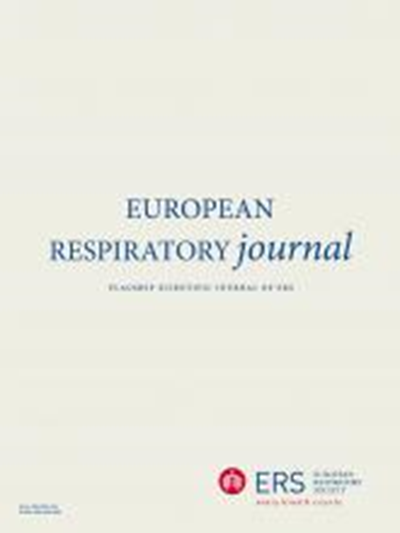肺移植后IgA黏膜免疫受损:闭塞性细支气管炎综合征的潜在诱因
IF 16.6
1区 医学
Q1 RESPIRATORY SYSTEM
引用次数: 0
摘要
闭塞性细支气管炎综合征(BOS)限制肺移植术后的长期生存,并可能由感染引发。由于免疫球蛋白(Ig)A对于确保足够的粘膜免疫至关重要,我们探讨了iga相关的粘膜免疫是否在BOS中受损。方法回顾性分析来自COLT队列的60例LuTx接受者。所有参与者在移植后的第一年病情稳定。在lutx治疗后的3.5年,30人保持稳定,30人发展为BOS。对移植前、移植后6个月(M6)和12个月(M12)收集的支气管肺泡灌洗液(BALF)和血清进行单体IgA、分泌(S)-IgA、分泌成分(SC)和细胞因子谱分析。其次,比较54例稳定型、BOS前期型、BOS或终末期BOS患者的移植组织样本中细支气管聚合Ig受体(pIgR)表达和上皮下产生iga的b细胞数量。结果在M6和M12期间,BALF中iga水平下降(p=0.0001),在M12时,BOS患者中iga水平下降(p=0.0018)。S-IgA水平较低的患者感染率较高。BOS患者血清SC水平升高(p<0.01)。BALF中S-IgA降低和血清SC升高均与BOS的高风险相关。最后,在BOS患者中观察到细支气管pIgR表达降低(p=0.0001),这与BOS的严重程度相似。结论:本研究表明,LuTx患者早期黏膜IgA免疫功能受损,与BOS的后期发展有关,提示IgA相关标志物可能是BOS发病的早期预测因子。本文章由计算机程序翻译,如有差异,请以英文原文为准。
Impaired IgA Mucosal Immunity Following Lung Transplantation: A Potential Trigger for Bronchiolitis Obliterans Syndrome.
RATIONALE
Bronchiolitis obliterans syndrome (BOS) limits long-term survival after lung transplantation (LuTx) and may be triggered by infections. As immunoglobulin (Ig)A is crucial to ensure adequate mucosal immunity, we explored whether IgA-related mucosal immunity is impaired in BOS.
METHODS
Sixty LuTx recipients from the COLT cohort were retrospectively included. All participants were in stable condition within the first year post-transplant. At 3.5 years post-LuTx, 30 remained stable and 30 had developed BOS. Bronchoalveolar lavage fluid (BALF) and sera collected pre-transplant and at 6 (M6) and 12 months (M12) post-transplant were assessed for monomeric IgA, secretory (S)-IgA, secretory component (SC) and cytokine profiling. Second, bronchiolar polymeric Ig receptor (pIgR) expression and subepithelial IgA-producing B-cell numbers were compared across graft tissue samples from 54 LuTx recipients classified as stable, pre-BOS, BOS or end-stage BOS.
RESULTS
S-IgA levels in BALF decreased between M6 and M12 (p=0.0001) and were reduced in BOS patients at M12 (p=0.0018). Patients with lower S-IgA levels had higher infection rates. BOS patients exhibited elevated SC levels in serum (p<0.01). Both reduced S-IgA in BALF and increased SC in serum were associated with higher risk of BOS. Lastly, a reduction in bronchiolar pIgR expression was observed in BOS patients (p=0.0001), that paralleled BOS severity.
CONCLUSIONS
This study demonstrates an early impairment of mucosal IgA immunity in LuTx patients, which was linked to the later development of BOS, suggesting that IgA-related markers may serve as early predictors of BOS onset.
求助全文
通过发布文献求助,成功后即可免费获取论文全文。
去求助
来源期刊

European Respiratory Journal
医学-呼吸系统
CiteScore
27.50
自引率
3.30%
发文量
345
审稿时长
2-4 weeks
期刊介绍:
The European Respiratory Journal (ERJ) is the flagship journal of the European Respiratory Society. It has a current impact factor of 24.9. The journal covers various aspects of adult and paediatric respiratory medicine, including cell biology, epidemiology, immunology, oncology, pathophysiology, imaging, occupational medicine, intensive care, sleep medicine, and thoracic surgery. In addition to original research material, the ERJ publishes editorial commentaries, reviews, short research letters, and correspondence to the editor. The articles are published continuously and collected into 12 monthly issues in two volumes per year.
 求助内容:
求助内容: 应助结果提醒方式:
应助结果提醒方式:


